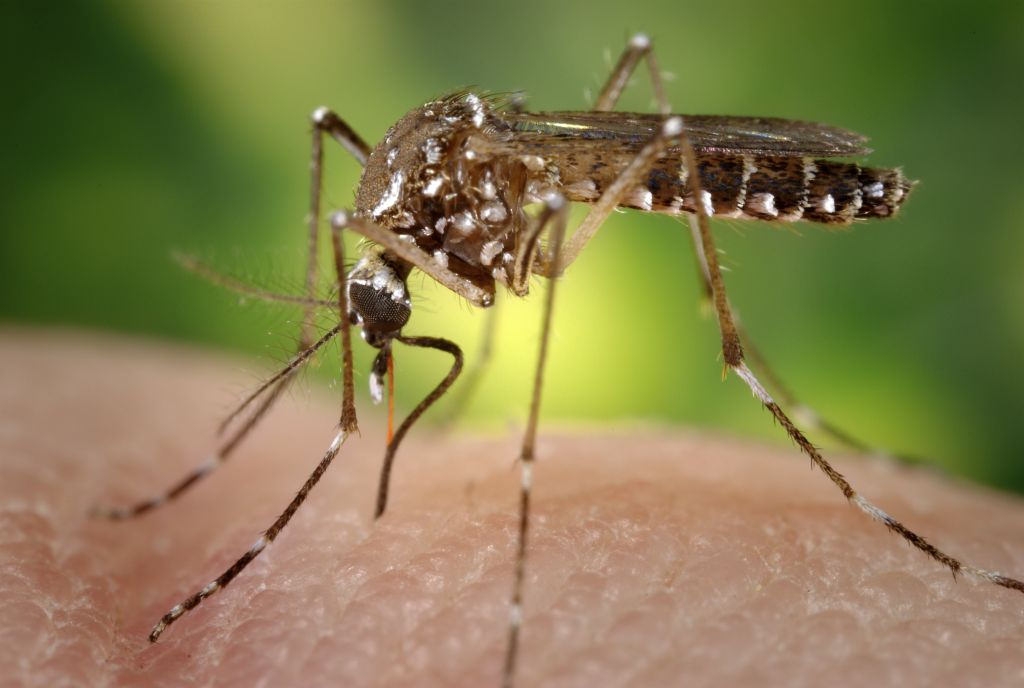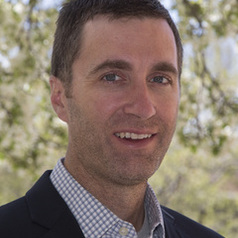As Americans ready themselves for the arrival of mosquitoes this summer, many may be wondering whether they are at risk for tropical diseases like Zika and whether climate change will raise the risks of infection.
My colleagues and I recently completed a study examining how projected changes in climate and human population may increase global exposure to the mosquito that spreads these viruses: Aedes aegypti.
We found that both climate change and human population change will play a part in driving future human exposure to Aedes aegypti globally. In the United States, specifically, warming temperatures from climate change mean that this disease-spreading mosquito will be increasingly abundant in the southern and eastern U.S.
Human-dependent mosquitoes
Aedes aegypti transmits the viruses that cause Zika, dengue, chikungunya and yellow fever. An ongoing Zika pandemic in Latin America and the Caribbean has been linked to birth defects in newborns and neurological disorders in adults, initiating a massive public health response and garnering extensive media coverage. The other three viruses are important threats as well: dengue viruses infect about 400 million people each year, chikungunya has been linked to chronic health problems such as arthritis and a new yellow fever outbreak in Angola has stoked fears of imminent vaccine shortages.
Aedes aegypti is a particularly effective virus spreader because of its dependence on humans. While many mosquitoes prefer natural areas for breeding, such as wetlands, Aedes aegypti exploits artificial water-filled containers such as tires, buckets, barrels and stray trash for its aquatic life stages (egg, larvae and pupae). Such containers are often found in backyards, meaning that when adult mosquitoes finally emerge, they are found in and near homes. And, while other mosquito species may be less picky about whom they bite, Aedes aegypti has a preference for humans.
Climatic factors affect Aedes aegypti in a number of ways. Warmer temperatures (up to a certain point) enable faster development during the aquatic life stages, and greater survival rates at all life stages. Precipitation, which can be affected by climate change, provides water needed to complete aquatic life stages.
Aedes aegypti is primarily found in warm, wet tropical and subtropical urban areas. However, it also can thrive in arid desert environments, particularly in areas where humans may store water in barrels or cisterns during dry spells. The range of the mosquito expands and contracts seasonally in the United States, which is at the temperature-limited margin of its survival.
Modeling the future
Our study attempted to go beyond using climate change projections to explore how global warming may affect the future range of Aedes aegypti. This has been done before.
Instead, we sought to estimate how many humans may be exposed to the mosquito in the future, based on a new set of population projections as well as factors related to climate change. This allowed us to forecast how many people will be exposed to Aedes aegypti in the future and determine the relative roles of climate change and population growth.
We first mapped the historic range of Aedes aegypti based on the different climate patterns in which the mosquito can survive, ranging from seasonal to a year-round presence. We used previously established relationships between monthly temperature and precipitation and data on the actual presence and abundance of the mosquito.
Next, we produced future maps of the Aedes aegypti global occurrence patterns for 2061-2080 using projections for air temperature and precipitation patterns.
These models were derived from two plausible future scenarios for air pollution and greenhouse gas pathways in the 21st century: one in which greenhouse gases are mitigated so that global average warming doesn’t exceed 2 degrees Celsius average temperature increase over preindustrial levels and another in which greenhouse gas emissions continue to grow unchecked.
Finally, we examined population growth for two different possible future socioeconomic conditions. The “low vulnerability” scenario assumes improved living standards and falling birthrates in poorer countries, and another “high vulnerability” scenario has continued low living standards and high birthrates in poorer countries.
Separating population from climate
From the historical results, we estimated that 63 percent of the global population is presently exposed to Aedes aegypti.
To isolate climate change from population trends, we modeled how the level of exposure would change if population remained at historical levels (an unrealistic assumption but useful for our projections). In this scenario, we found that the percentage of humans exposed to Aedes aegypti would grow to 68-70 percent of the global population by 2061-2080, depending on how much emissions rose. The projected changes were primarily driven by warming rather than changing rainfall patterns.
Including population growth, the percentage of the exposed global population would grow to 71-74 percent under the lower vulnerability socioeconomic pathway. Under the higher vulnerability pathway of continued low living standards and high birthrates, we found 77-80 percent of global population would be exposed to Aedes aegypti.
Not only would more humans be exposed under the higher-vulnerability pathway, but we found much of the population growth would occur in urban slums in developing countries in the tropics and subtropics; these areas are ideal breeding grounds for Aedes aegypti and have high virus transmission potential.
Importantly, the differences among the projections are driven mostly by uncertainty in how and where human populations may change, rather than uncertainty due to different climate change scenarios. This result underscores how important it will be for the research community to continue improving socioeconomic projections, such as population growth.
Public health preparation
As always, the devil is in the details. For example, our analysis found wealthier regions that are the margins of the present-day range for Aedes aegypti – Australia, North America and Europe – would benefit the most from reducing greenhouse gases. Minimizing warming means changes to the mosquitoes' range will also be minimized at these cool margins.
It is noteworthy that there are numerous limitations to the study. Specifically, there is uncertainty related to future emissions, future geopolitics, mosquito control practices, human behavior, transportation networks and other competing mosquito species.
Still, the implications for public health policymakers are that, all else equal, climate change and population growth will likely increase the percentage of humans exposed to this important virus vector mosquito, including parts of the U.S. Cutting greenhouse gas emissions can make a dent. Improving public health preparedness and response in the near term will build the capacity to deal with greater exposure in the future.
 Andrew Monaghan is affiliated with the Democratic Party, the American Geophysical Union, and the American Meteorological Society.
Andrew Monaghan is affiliated with the Democratic Party, the American Geophysical Union, and the American Meteorological Society.
Andrew Monaghan, Scientist Research Applications Laboratory in Climate Science & Applications Program, University Corporation for Atmospheric Research
This article was originally published on The Conversation. Read the original article.



 Proteins in milk and blood could one day let doctors detect breast cancer earlier – and save lives
Proteins in milk and blood could one day let doctors detect breast cancer earlier – and save lives  How agriculture can make the most of one of the world’s biggest carbon sink, soil
How agriculture can make the most of one of the world’s biggest carbon sink, soil  The hidden racist history of hair loss
The hidden racist history of hair loss  An education in music makes you a better employee. Are recruiters in tune?
An education in music makes you a better employee. Are recruiters in tune?  After Iran’s attack on Israel, is a devastating regional war next?
After Iran’s attack on Israel, is a devastating regional war next?  General practice is in crisis in the UK – and it’s failing the people who need it most
General practice is in crisis in the UK – and it’s failing the people who need it most  Gaza war: Israel using AI to identify human targets raising fears that innocents are being caught in the net
Gaza war: Israel using AI to identify human targets raising fears that innocents are being caught in the net  How hybrid work is reinventing management
How hybrid work is reinventing management  Why Africa can be the beating heart of South Korea’s technology industry
Why Africa can be the beating heart of South Korea’s technology industry  Tapeworm larvae found in man’s brain – how did they get there?
Tapeworm larvae found in man’s brain – how did they get there?  Traditional Japanese diet associated with less brain shrinkage in women compared to western diet, says research
Traditional Japanese diet associated with less brain shrinkage in women compared to western diet, says research  'Gold' hydrogen: natural deposits are turning up all over the world – but how useful is it in our move away from fossil fuels?
'Gold' hydrogen: natural deposits are turning up all over the world – but how useful is it in our move away from fossil fuels?  Rogue waves in the ocean are much more common than anyone suspected, says new study
Rogue waves in the ocean are much more common than anyone suspected, says new study  Eating some chocolate really might be good for you – here’s what the research says
Eating some chocolate really might be good for you – here’s what the research says 

































